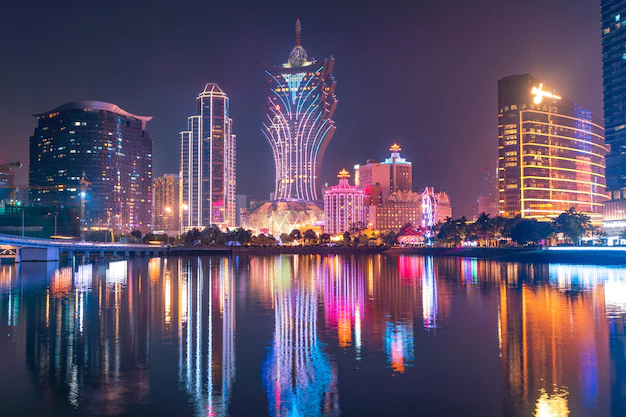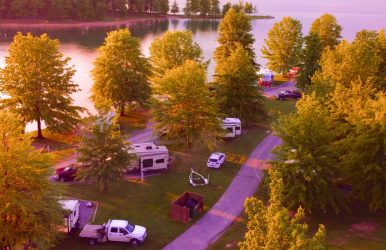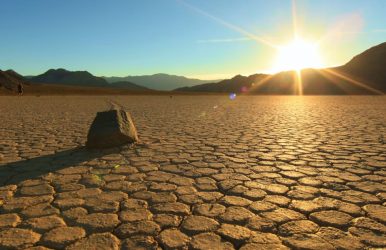Wonders of the Waves: RV Camping Along Oregon’s Coastal Beauty
BY Abdul Aziz Dec 30, 2023
RV-ers can choose from a wide variety of views, terrain, activities, and climates thanks to Oregon's diverse geography. Camping in Oregon offers a variety of locations. It includes open prairie grasslands, dense old-growth Douglas Fir forests, and a 5,000-foot high desert plateau. There is also the Willamette Valley, close to all the urban excitement, and campsites with expansive views of the Pacific Ocean. It's inviting to visit the coast. All along the coast, there are both public and private campgrounds that are ready to welcome guests. Stunning ocean views abound at these campgrounds. For others, it's a quick drive or stroll to the beach. You can find great surfing along the Oregon Coast in the Pacific surf. Bring a wet suit and board. Ultimately, the water remains chilly even in the summer. Winchester Bay RV Resort is yet another place you simply must visit. You won't be sorry if you can secure reservations at this well-known resort. Situated on an artificial peninsula projecting into the Umpqua River is the park. The park is beautifully manicured and furnished, and the peninsula creates views from all directions. Every site has paving, 50-amp electricity, sewage, and water. There are directional sites that optimize your view and accessibility to hook-ups, whether you're camping in a motorhome, travel trailer, or fifth wheel. If you have RV camping Oregon Coast on your mind, this article is for you. RV Camping Oregon Coast Are you excited by the prospect of taking the RV and just hitting the road? When it comes to RV camping Oregon Coast has some of the best options. Here are the places you must dig into if you are thinking about an RV and the Oregon Coast simultaneously. Take a peek: Bandon If golf is your thing, you'll love Bandon, Oregon, where you can choose from six top-notch golf courses and play 18 holes of golf while taking in breathtaking views of the Pacific Ocean. Bandon Dunes, Pacific Dunes, Bandon Trail, Old MacDonald, Sheep Trail, and Bandon Preserve are the six internationally famous 18-hole courses just outside of Bandon. You can hone your putting skills on the Punchbowl Putting Greens or practice every stroke in the Practice Center. Since these courses host multiple tournaments each year, make sure to reserve your tee time when you make plans to play golf in Bandon. These are fantastic golf courses with breathtaking scenery to enjoy while playing. This one is another good option for RV camping Oregon Coast. Shore Acres State Park Additionally, if you find yourself on the Southern Oregon Coast in December, make time to see the amazing Christmas light display at Shore Acres State Park. This display is like Christmas lights put on a higher gear. Throughout the year, the park is a beautiful botanical garden, but shortly after Thanksgiving, hundreds of volunteers arrive to decorate every tree, shrub, bush, and water feature. The outcomes are breathtaking, and you can stroll through the garden, savor hot apple cider and cookies in the guest house, and pick up some mementos and warm beverages at the gift shop before leaving. There is a small admission fee. Depoe Bay A small town called Depoe Bay is halfway between Newport and Lincoln City. You can get fresh saltwater taffy there and keep an eye out for whale migration. Take some time to peruse the souvenir shops lining the waterfront and keep an eye out for the Spouting Horn, where water shoots over the sea wall. Tillamook Cheese Factory Make time to visit the well-known Tillamook Cheese Factory, where you can observe the cheese-making process from covered observation decks that look out over the production areas. There is no competitor like Tillamook Ice Cream, and people from all over the world frequently wait in long lines at the ice cream counter. It's worth the wait, but if you're in a hurry, pick up a few pints to enjoy later in the freezer. Tillamook Cheese Factory is a great spot for RV camping Oregon Coast. Astoria Column You won't want to miss the Astoria Column and the Astoria Bridge. If you're a fan of the film Goonies, these northern coast communities also have the Goonies' house. The rocks are lined up with the Doubloon and also the beach where the kids were reunited with their parents. Fort Stevens State Park On the northernmost point of the Oregon Coast is Fort Stevens State Park. It boasts one of the biggest public campgrounds in the country, according to Oregon State Parks. In addition to 15 yurts and 11 deluxe cabins, the park features 302 electrical sites, 6 tent sites, and 174 full hookup sites. The park still has a military museum with year-round exhibits and marks the location of an abandoned military installation. In addition, there are miles of hiking trails and beaches to discover. Go to the Peter Iredale Shipwreck site, where the masts and rusted bow are still visible in the sand. Cape Lookout State Park One of the most breathtaking places on the Oregon Coast is the Cape Lookout State Park. It is situated in Tillamook, Oregon. The state park offers visitors breathtaking views of the ocean day and night, encompassing both a lovely beach and a headland. The park offers a range of activities to its visitors, including camping, hiking, fishing, surfing, and beach combing. It is situated within the Three Capes Scenic Loop. There are lots of outdoor activities to enjoy at Cape Lookout State Park. The beach is ideal for beach combing, swimming, and surfing. The headland is a fantastic location for hiking, photography, and fishing, and it offers breathtaking views of the ocean. Harbor Vista RV Park The Harbor Vista RV Park is situated in Florence, Oregon. With breathtaking views of the river and the surroundings, it boasts a prime location directly on the Siuslaw River. The family-run RV park is the ideal spot to unwind and take in Oregon's natural splendor. Large full-hookup RV sites are available in the park, and many of them can accommodate RVs up to 36 feet long. All of the locations have 20/30/50 amp electrical hookups, and some also have Wi-Fi and cable TV. The park's private marina is directly accessible from every site, making it the perfect place for a tranquil and restful vacation. Discover why guests adore Harbor Vista RV Park: the stunning vistas, the handy location, as well as the welcoming staff. The staff will make every effort to guarantee that each visitor has an amazing stay. For those who prefer to be active, the park also has a fantastic area for swimming, fishing, and kayaking, thanks to the private marina. Wrapping Up Although Oregon is a beautiful state overall, the Oregon Coast is so unique that it was designated a national treasure in the 1960s, meaning that no beach can be developed for profit. Every beach in the nation is publicly accessible for your enjoyment and belongs to everyone. Bring your furry friends, and make plans to stay awhile. If you have thoughts to share or questions to ask about RV camping Oregon Coast, please leave a comment below. We would love to hear from you! Read Also: Florida Dreams: RV Camping Along the Sunshine State's Shore Top 7 Places To Visit For An Asian Solo Traveler Planning A Vacation To Bali? Read This Blog!














